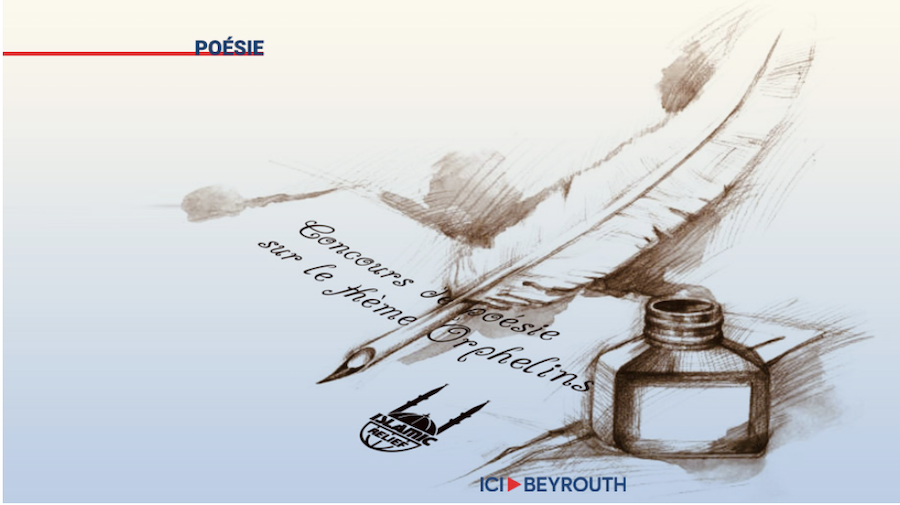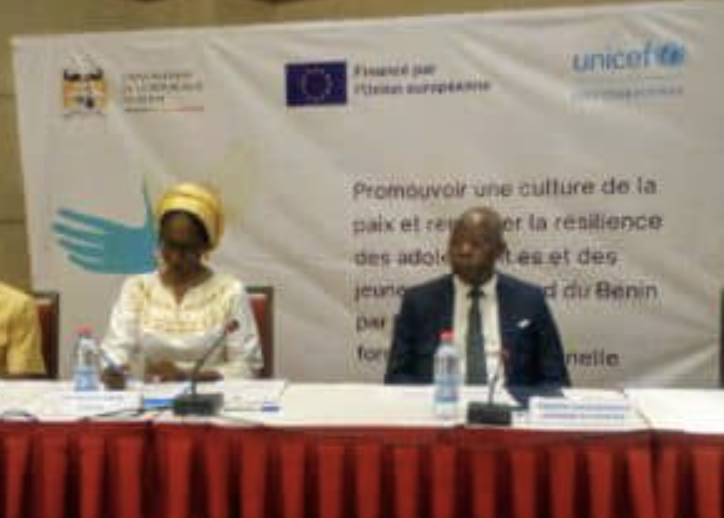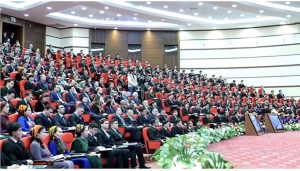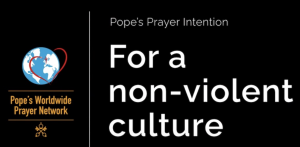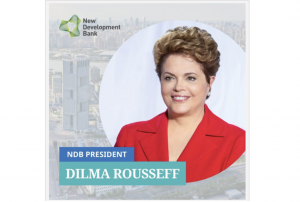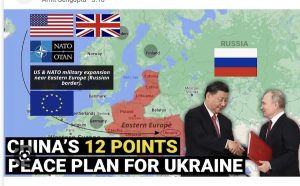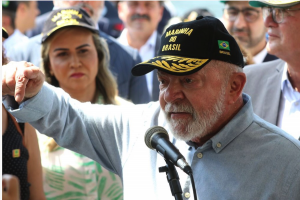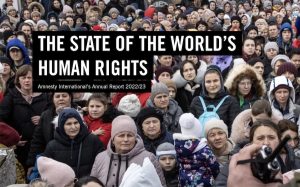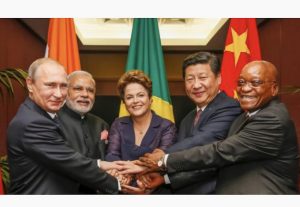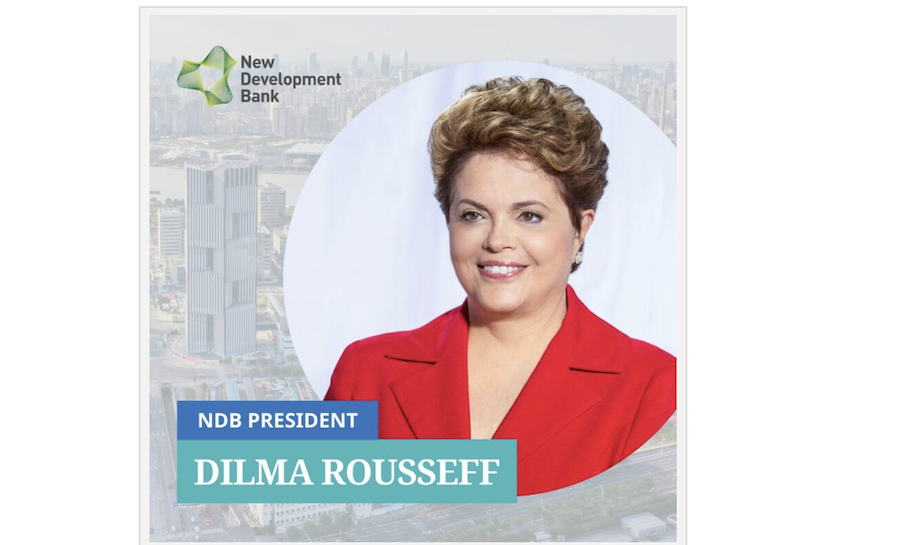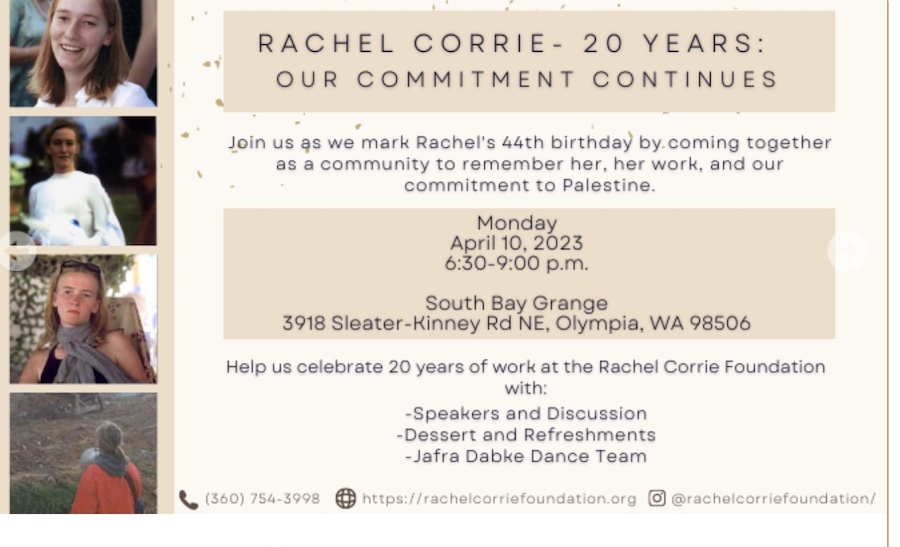. . SUSTAINABLE DEVELOPMENT . .
An article from The International Campaign to Abolish Nuclear Weapons
On 27 April 2023, the delegates of the Hiroshima G7 Youth Summit have presented their joint statement and requests of the G7 leaders for the upcoming Summit. Read the statement in full below.
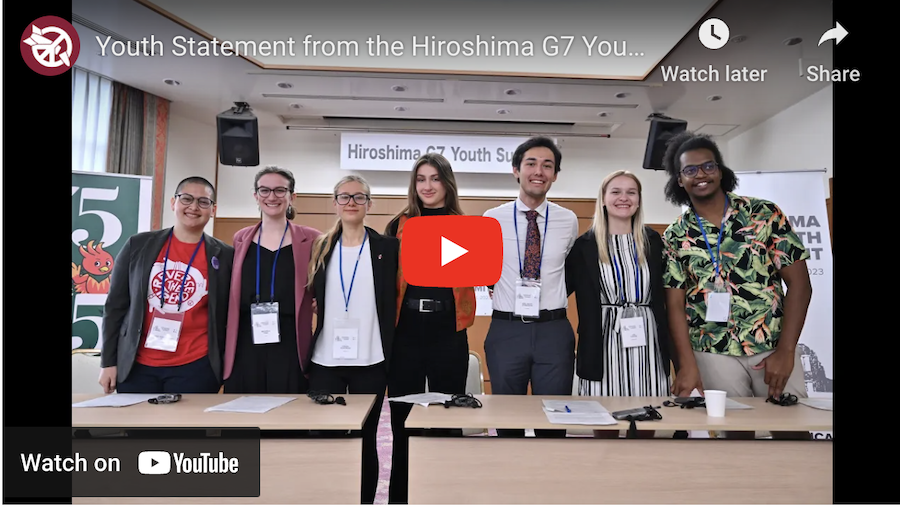
Video of event
Esteemed members of the press, distinguished guests, and fellow citizens, warm global greetings from the Hiroshima G7 Youth Summit.
On behalf of all the youth delegates and leaders from all over the world, we are honored to welcome you to the Presentation and Adoption of the Outcome Statement from this Summit. We have gathered in the historically significant city of Hiroshima, a poignant reminder of the devastating consequences of nuclear weapons and the urgent need for disarmament. Over the past week, we have had the unique opportunity to visit the Hiroshima Peace Memorial and meet the hibakusha, the courageous survivors of nuclear weapons. Their stories have moved us deeply, further strengthening our resolve to create a world free from the horrors of nuclear warfare.
We would like to acknowledge the traditional custodians of the country of Japan and particularly the city of Hiroshima on which we have gathered for this Hiroshima G7 Youth Summit. We would like to pay our respects to the Elders past and present. We extend that respect to all the community from Hiroshima and also to all the souls who died from the atomic bomb.
We would like to express our heartfelt gratitude to all the organizations and individuals who have made this event and summit possible, including The Center for Peace at Hiroshima University, ICAN: the International Campaign to Abolish Nuclear, Peace Boat, the Hiroshima Peace Memorial Museum, the Hiroshima Peace Culture Foundation, ANT-Hiroshima, Soka Gakkai International (SGI), the City of Hiroshima, Religions for Peace Japan, and Heinrich Boell Stiftung Hong Kong. This summit is held as part of the Hiroshima University 75+75th Anniversary Project and we are grateful for their support and contributions.
Not only this summit is a way to gather the youth in participation in authentic encounters, together with openness for diversity and acceptance of differences but also a way to use youth voices to call out injustices like the use of nuclear weapons and its consequences.
So please, let me invite you now to listen carefully to the Outcome statement from the Hiroshima G7 Youth Summit.
Introduction
Esteemed Leaders and Representatives to the G7 Hiroshima Summit,
We, as youth delegates and changemakers from around the world, are honored to be here in Hiroshima, the city that symbolizes the devastating consequences of nuclear weapons. We gather here with experts and advocates for peace from every corner of the globe to address the existential threats the world faces, including climate change and nuclear weapons. We applaud the G7 countries and civil society for convening this crucial summit and acknowledge the need for immediate action towards the abolition of nuclear weapons.
As emerging leaders of the world, we have a responsibility to ensure that the danger posed and inflicted by nuclear weapons to humanity and the environment is eradicated and remediated. We come together, united in our resolve to achieve a safer world free from nuclear weapons and their devastating consequences.
In Hiroshima, we call on the world to listen to the hibakusha — the survivors of nuclear weapons — and recognize the moral imperative of nuclear disarmament. We urgently demand action on nuclear weapons to honor the lived experiences of the hibakusha and other communities affected by nuclear weapons, and to secure a safer world free from weapons of mass destruction for generations to come.
The possession or use of nuclear weapons is illegitimate as recognized by the Treaty on the Prohibition of Nuclear Weapons (TPNW) and our future security cannot be dependent on distrust among countries or the threat of devastating humanitarian and environmental consequences.
Given the conflicts and crises we face today, we believe that the time for action against nuclear weapons is now. As young people, we champion the TPNW as the most effective path to eliminating nuclear weapons.
Youth Voices and Concerns
As the last generation with the opportunity to directly hear the testimonies from global hibakusha, it is our mission and responsibility to embed their stories in our work and share them with younger generations.
Survivors, their families, and Indigenous communities disproportionately affected by nuclear weapons use, testing, production, and waste continue to suffer from traumatic experiences, devastating land loss, and critical health issues. We have a duty to these communities and ourselves to pursue the complete disarmament and the abolition of nuclear weapons.
We are aware of the concerns about dumping 1.3 million tonnes of radioactive waste water this year, and support in solidarity with the states who sit on the frontlines of this crisis and see this as an act of trans-boundary harm upon the Pacific.
(article continued in right column)
Question for this article:
Are we seeing the dawn of a global youth movement?
(Article continued from the left column)
Requests to the G7 Countries
As young people working for a world without nuclear weapons, we request that the G7 countries take the following actions:
1. Support and listen to global hibakusha by welcoming their testimonials, attending the Hiroshima Peace Memorial Museum, and sincerely committing to steps towards nuclear disarmament;
2. Take concrete steps towards the pursuit of the TPNW including but not limited to the promotion of the TPNW within regional and international organizations, observation of the Second Meeting of States Parties to the TPNW, and cooperation with TPNW states parties to support treaty implementation;
3. Promote the immediate assessment and research in regions and communities affected by nuclear weapons, so that states, organizations, and individuals may engage in processes of victim assistance and environmental remediation in cooperation with international institutes, civil society and affected communities;
4. Fulfill the legal obligation of nuclear disarmament bound by Article 6 of the 1968 Treaty on the Non-Proliferation of Nuclear Weapons (NPT), by initiating the discussion in national governments regarding the complementarity between the NPT and the TPNW.
5. Recognize the legitimacy of and opportunities for processes of irreversibility and verification provided by the TPNW;
6. Uphold the principles of Articles 6 and 7 of the TPNW to promote cooperation for the implementation of the Treaty, and to provide victim assistance and environmental remediation efforts to address the past and ongoing harms of nuclear weapons;
7. Ensure the involvement and genuine representation of marginalized communities based upon race, gender, economic status, and geographical borders, and to include and empower individuals especially from Indigenous or nuclear-affected backgrounds in the decision-making processes of nuclear policies as well as initiatives for peace and disarmament at national and local levels;
8. Restrict spending on weapons of mass destruction, in particular nuclear weapons, and instead shift funding towards sustainable investments in mitigating the effects of climate change, programs for education, and peacebuilding efforts;
9. Call on countries to take responsibility for past and present nuclear waste disposal and ensure that disposal does not harm surrounding communities and countries;
10. Recognize the value of peace and disarmament education, and ensure funding for the education and empowerment of youth, women, and affected communities to engage in processes of nuclear disarmament;
11. Engage in constructive dialogues to shift the security paradigm away from the immoral possession and valuing of nuclear weapons, commit to a sustainable future by condemning the threat or use of nuclear weapons, and develop new policies which are based on the principles of nuclear disarmament and norms of non-use rather than false deterrence.
Conclusion
Esteemed G7 leaders and delegates, as the torchbearers of tomorrow, we stand resolute in our commitment to the complete abolition of nuclear weapons. We acknowledge the past efforts made by G7 states to pursue shared goals of security and humanity. However, we urge you to take bolder and more decisive actions by honoring our recommendations.
Our generation has the right to choose the future we inherit, and we possess the unwavering determination to build a more just, equitable, and sustainable world — one that is free from the shadow of nuclear weapons. Now, more than ever, we call upon you to join our mission, to heed our voices, and to work together to safeguard our collective humanity and the future of our planet.
Closing Remarks:
As we conclude this important event, we urge the G7 leaders to not consider it the end but rather a new beginning in our collective efforts for a world free from nuclear weapons. The experiences we have shared throughout the G7 Youth Summit including our first-hand visit to
the Hiroshima Peace Memorial and our engagements with the hibakusha, Ms. Keiko Ogura, er life and memories of WWII Hiroshima will forever be etched in our hearts and minds, reminding us of the tremendous responsibility we have to advocate for sustainable peace and
harmonious coexistence.
We, the youth delegates, are determined to commit to the task of carrying the lessons we have learned here in Hiroshima back to our respective countries and throughout the world, and to continue working tirelessly for nuclear disarmament. We call for a renewed focus on empowering victim assistance and protection, for the increase in nuclear disarmament education and peace education in schools, and to continue expanding opportunities for global citizens to engage with the hibakusha and their invaluable stories, for the sake of sustainable international peace-building.
From the 21st Century and beyond, we are resolved to unite across borders, languages, and local cultures to create a global culture of peace and total nuclear abolition. We believe that we must forge a world not just free from the devastating consequences of nuclear weapons, but one that is constructive and intentional for lasting peace. We are determined to ensure that the sacrifices and stories of the hibakusha willnever be forgotten. We urge the G7 leaders to heed our words and take concrete action for a sustainable and mutually prosperous world.
Thank you very much


